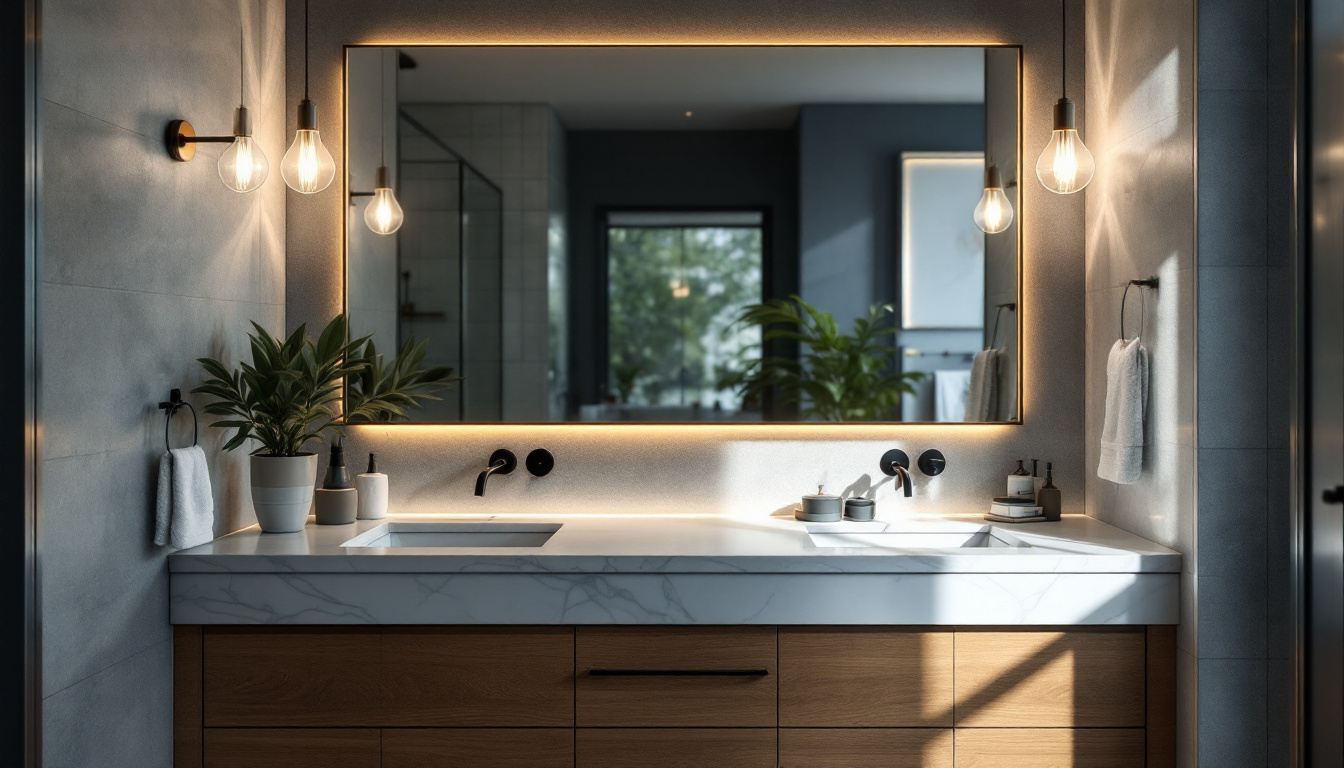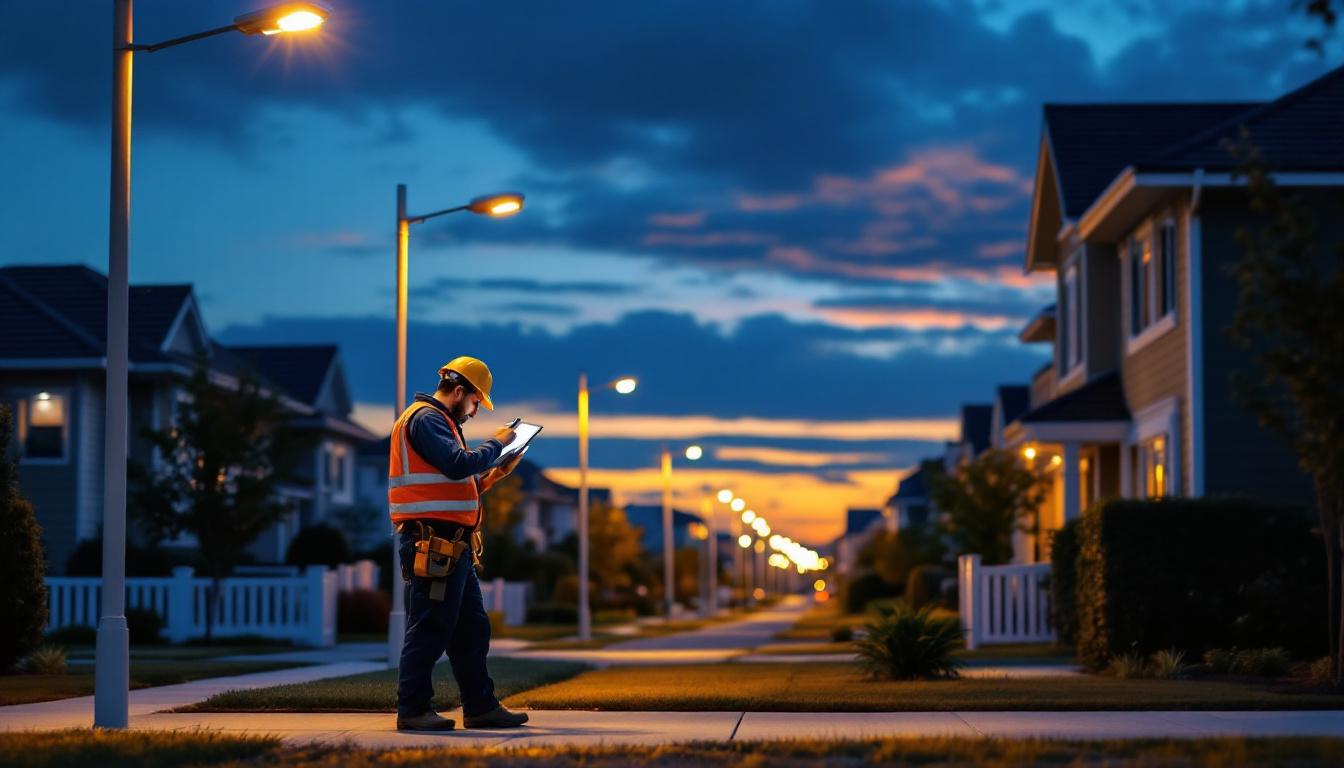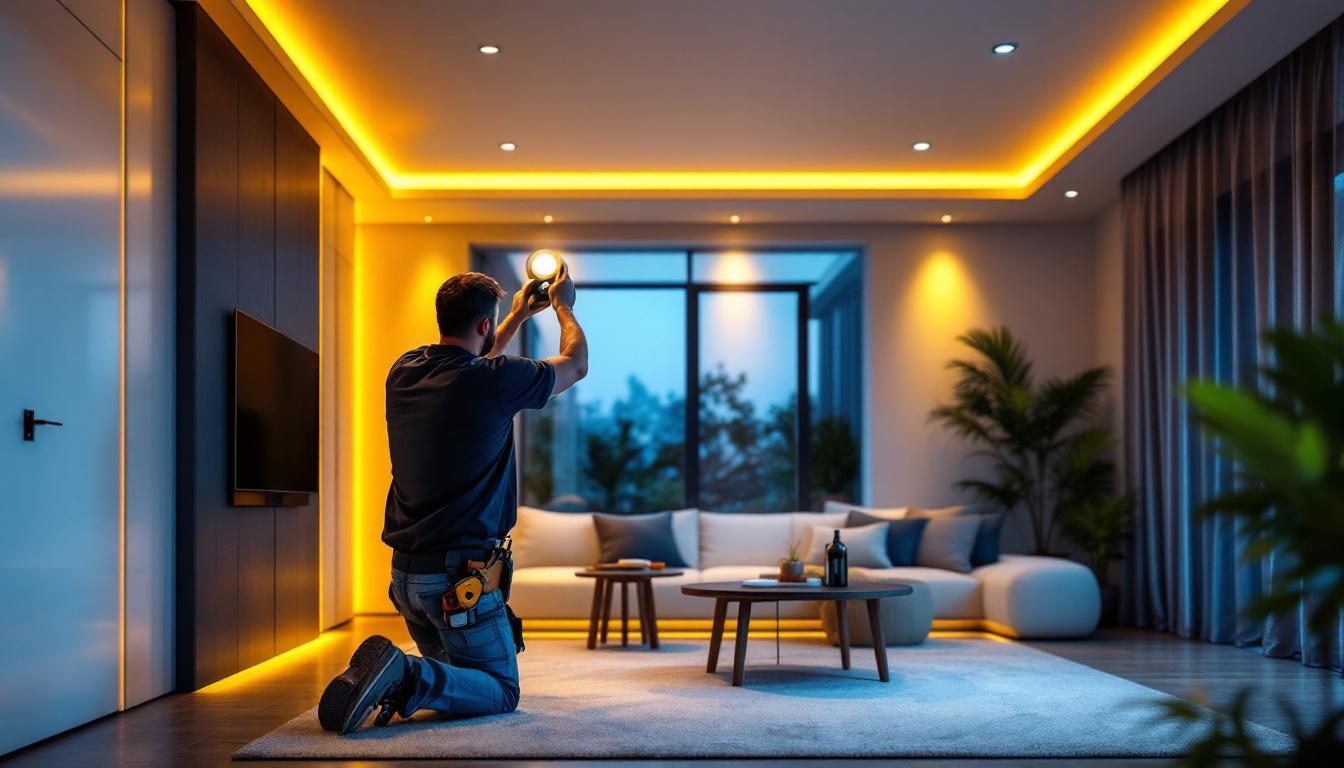
Outdoor lighting plays a crucial role in enhancing the aesthetics and functionality of residential and commercial spaces. For lighting contractors, understanding the science behind outdoor lighting is essential for creating effective and energy-efficient designs. This article delves into the principles of outdoor lighting, exploring various aspects that contractors must consider when planning and executing lighting projects.
One of the primary considerations in outdoor lighting design is the balance between illumination and shadow. Properly placed fixtures can highlight architectural features, landscaping, and pathways while ensuring that dark areas are not overly daunting. This balance not only improves safety by reducing the risk of accidents but also enhances the overall ambiance of the space, creating inviting environments for gatherings or quiet reflection. Additionally, contractors must be aware of the different types of outdoor lighting, such as ambient, task, and accent lighting, each serving a unique purpose in the overall design scheme.
Furthermore, the integration of energy-efficient technologies, such as LED lighting, has revolutionized outdoor lighting projects. LEDs consume significantly less energy than traditional bulbs and have a longer lifespan, making them a cost-effective choice for both contractors and clients. The use of smart lighting systems, which can be controlled remotely or programmed to adjust based on natural light levels, adds another layer of sophistication to outdoor lighting designs. These advancements not only contribute to sustainability but also allow for greater flexibility and creativity in achieving the desired lighting effects.
Outdoor lighting serves multiple purposes, from enhancing safety and security to improving the visual appeal of a property. Effective outdoor lighting can transform a mundane space into an inviting environment, making it essential for contractors to grasp its significance.
One of the primary functions of outdoor lighting is to enhance safety. Well-lit pathways, driveways, and entrances reduce the risk of accidents and deter potential intruders. By illuminating these areas, contractors can create a safer environment for residents and visitors alike.
Moreover, strategically placed lighting can highlight potential hazards, such as steps or uneven surfaces, making them more visible at night. This not only prevents accidents but also provides peace of mind for homeowners. Additionally, motion-sensor lights can be an effective deterrent against crime, as they activate when someone approaches, startling intruders and alerting homeowners to unusual activity. The combination of aesthetic and functional lighting creates a comprehensive safety strategy that benefits everyone who uses the space.
Aesthetically pleasing outdoor lighting can dramatically change the perception of a property. By using various lighting techniques, contractors can highlight architectural features, landscaping, and outdoor living spaces. This not only enhances the beauty of the property but can also increase its value.
Lighting can create different moods and atmospheres, allowing homeowners to enjoy their outdoor spaces during the evening. Whether it’s a soft glow for a cozy gathering or bright lights for a lively event, understanding how to manipulate light is key for contractors aiming to meet client expectations. Furthermore, the use of energy-efficient LED lights not only contributes to a lower carbon footprint but also allows for creative designs that can be tailored to fit the unique characteristics of a property. Incorporating dimmers and smart lighting systems can also provide homeowners with the flexibility to adjust brightness levels according to their needs, enhancing the overall experience of outdoor living.
To design effective outdoor lighting, contractors must have a solid understanding of different types of light sources and technologies available. Each option has its unique characteristics, advantages, and limitations.
Incandescent bulbs have been a traditional choice for outdoor lighting due to their warm color temperature and affordability. They provide excellent color rendering and are often used in decorative fixtures. However, their energy efficiency is relatively low compared to newer technologies, leading to higher electricity costs over time.
Contractors should consider the lifespan of incandescent bulbs, which is shorter than that of other options. This can result in increased maintenance costs for clients, making it essential to discuss alternatives during the planning phase.
Light Emitting Diodes (LEDs) have revolutionized outdoor lighting due to their energy efficiency, longevity, and versatility. LEDs consume significantly less power than incandescent bulbs and can last up to 25 times longer. This makes them an attractive option for both contractors and clients focused on sustainability and cost-effectiveness.
Moreover, LEDs are available in various color temperatures and can be easily integrated into smart lighting systems. This adaptability allows contractors to create customized lighting solutions that meet specific client needs and preferences.
Solar lighting is an eco-friendly option that harnesses the power of the sun to illuminate outdoor spaces. These lights are easy to install, require no wiring, and can be placed in remote areas where traditional electrical sources may not be available.
However, contractors must consider the limitations of solar lighting, such as performance during cloudy days and the need for adequate sunlight exposure. Understanding the specific requirements and capabilities of solar lights is crucial for ensuring client satisfaction.
Effective outdoor lighting is not just about choosing the right fixtures; it also involves employing various techniques and design principles to achieve the desired effect. Lighting contractors must be familiar with these strategies to create well-balanced and visually appealing outdoor spaces.
Layering light involves combining different types of lighting to create depth and interest in an outdoor space. This technique typically includes ambient, task, and accent lighting. Ambient lighting provides general illumination, while task lighting focuses on specific areas, such as pathways or seating areas. Accent lighting highlights particular features, such as trees or sculptures.
By layering these elements, contractors can achieve a balanced lighting scheme that enhances the functionality and beauty of the outdoor environment. This approach also allows for greater flexibility in design, accommodating various activities and moods.
The choice of fixtures plays a significant role in the overall effectiveness of outdoor lighting. Contractors should consider factors such as the intended use of the space, the style of the property, and the desired ambiance when selecting fixtures. Options range from wall-mounted sconces to post lights and in-ground fixtures.
Moreover, the placement of fixtures is equally important. Proper positioning can minimize glare and ensure even distribution of light, enhancing both safety and aesthetics. Contractors should also be mindful of the beam spread and light intensity to achieve the best results.
Creating focal points through lighting can draw attention to specific features within a landscape. This could be a beautifully landscaped garden, a water feature, or an architectural element of the building. By using accent lighting, contractors can highlight these focal points, adding visual interest and depth to the outdoor space.
In addition, the use of shadows can enhance the drama and character of a landscape. By carefully positioning lights, contractors can create intriguing shadow patterns that add dimension to the environment.
As the demand for energy-efficient solutions continues to grow, lighting contractors must prioritize sustainability in their outdoor lighting designs. This not only benefits the environment but can also lead to cost savings for clients.
Smart lighting technologies allow for greater control over outdoor lighting systems. These solutions enable homeowners to adjust brightness levels, set schedules, and even control lights remotely through smartphone applications. By incorporating smart lighting, contractors can enhance energy efficiency and provide added convenience for clients.
Additionally, smart systems can be integrated with motion sensors, ensuring that lights are only activated when needed. This further reduces energy consumption and extends the lifespan of lighting fixtures.
When selecting lighting products, contractors should prioritize energy-efficient options. LEDs, for instance, are not only long-lasting but also consume significantly less power compared to traditional bulbs. By recommending energy-efficient products, contractors can help clients reduce their carbon footprint and lower utility bills.
Furthermore, using solar-powered lights can contribute to sustainability efforts. These lights require minimal maintenance and can be a cost-effective solution for illuminating outdoor spaces without relying on grid power.
Lighting contractors must also be aware of regulatory and safety considerations when designing outdoor lighting systems. Compliance with local codes and regulations is essential to ensure the safety and legality of installations.
Local codes may dictate specific requirements for outdoor lighting, including brightness levels, fixture types, and placement. Contractors should familiarize themselves with these regulations to avoid potential fines and ensure that their designs meet safety standards.
Moreover, understanding zoning laws and restrictions can help contractors navigate the complexities of outdoor lighting installations, especially in residential areas where light pollution may be a concern.
Adhering to safety standards is paramount in outdoor lighting installations. Contractors should ensure that all electrical components are weatherproof and properly grounded to prevent hazards. Additionally, using fixtures that are rated for outdoor use can minimize the risk of damage and ensure longevity.
Best practices also include conducting thorough site assessments before installation. This allows contractors to identify potential hazards and plan accordingly, ensuring that the lighting design enhances safety without compromising aesthetics.
Understanding the science behind outdoor lighting is essential for lighting contractors aiming to create effective, energy-efficient, and aesthetically pleasing designs. By considering the various aspects discussed in this article—ranging from the types of lighting and techniques to sustainability and regulatory considerations—contractors can enhance their expertise and deliver exceptional results for their clients.
As the demand for outdoor lighting continues to grow, staying informed about the latest trends and technologies will be key to remaining competitive in the industry. By prioritizing safety, energy efficiency, and design principles, lighting contractors can create outdoor spaces that are not only functional but also beautiful and inviting.
Ready to elevate your outdoor lighting projects with the best in spec-grade lighting products? Look no further than LumenWholesale, where we offer an unbeatable combination of quality, affordability, and convenience. Our extensive selection is designed to meet the highest industry standards, ensuring that every installation shines with reliability and performance. Say goodbye to middleman markups and hello to hassle-free bulk buying with free shipping. Don’t compromise on your lighting needs—choose LumenWholesale for premium lighting at the best value. Wholesale Lighting at the Best Value.

Discover the top benefits of bathroom vanity lights for lighting contractors, from enhancing aesthetics to improving functionality.

Discover expert strategies and proven techniques for lighting contractors to select and install commercial light fixtures.

Discover how residential street lights are revolutionizing efficiency for lighting contractors.

Discover how recessed wafer lights can transform your business with increased efficiency and profitability.